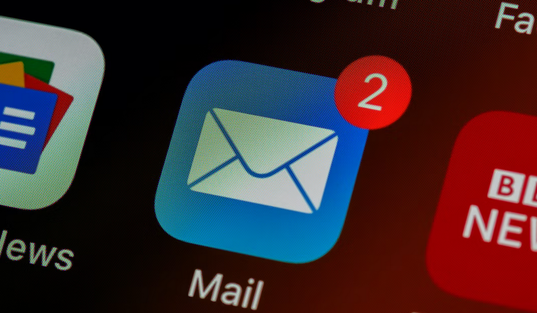|
Introducing your children's book to the world requires effective marketing strategies that captivate your target audience and generate excitement. From leveraging social media platforms and organizing school visits to participating in book festivals and utilizing influencer partnerships, there are numerous avenues to explore. By employing a thoughtful and comprehensive marketing approach, you can create awareness, engage readers, and build a loyal following for your children's book. In this guide, we will explore various marketing techniques and provide valuable insights to help you successfully promote and share your imaginative and enchanting story with the world. Build Your Brand Building a brand to promote your children's book can be an effective way to create awareness, engage with your target audience, and ultimately drive book sales. Here are some steps to help you build your brand: Define your brand identity: Start by defining your brand identity, including your book's unique selling points, values, and target audience. Consider the tone, style, and themes of your book, and how you want your brand to be perceived by parents, children, and other stakeholders. Develop a compelling brand story: Craft a compelling brand story that highlights the inspiration behind your book, your journey as an author, and the impact you hope to make. This story will help you connect emotionally with your audience and differentiate your brand from others. Design a memorable brand logo and visual identity: Create a visually appealing brand logo and select a color palette, typography, and other design elements that reflect the essence of your book. Consistency in visual branding across your website, social media profiles, and marketing materials will help create a cohesive and recognizable brand presence. Build an author website: Create a dedicated website that showcases your book, author bio, brand story, and other relevant information. Make sure your website is visually appealing, user-friendly, and optimized for search engines. Include a blog section where you can share updates, behind-the-scenes content, and engage with your audience. Leverage social media: Identify social media platforms that resonate with your target audience, such as Instagram, Facebook, or TikTok. Create engaging content that aligns with your brand and book's themes. Share illustrations, sneak peeks, book reviews, author insights, and fun activities related to your book. Actively interact with your followers, respond to comments, and use relevant hashtags to expand your reach. Collaborate with influencers and bloggers: Partner with relevant influencers and bloggers who cater to your target audience. They can review your book, host giveaways, or feature your content on their platforms. Collaborating with influencers helps increase brand visibility, credibility, and reach. Organize events and book readings: Organize book readings, storytelling sessions, or virtual events in schools, libraries, bookstores, or community centers. Engaging directly with children and parents allows you to create personal connections, gain feedback, and generate word-of-mouth promotion. Seek media coverage: Write press releases and pitch your book to local newspapers, parenting magazines, and online publications that focus on children's literature. Highlight the unique aspects of your book, your brand story, and any upcoming events or promotions. Media coverage can significantly increase your brand exposure and reach. Engage with your audience: Actively engage with your audience through comments, direct messages, and emails. Encourage readers to share their experiences, reviews, and artwork related to your book. Show genuine interest and appreciation for their support, fostering a loyal community around your brand. Continuously promote and evolve your brand: Regularly promote your book and brand through various channels, such as newsletters, guest blog posts, podcast interviews, and collaborations with other authors or brands in the children's literature space. Adapt your marketing strategies based on feedback, market trends, and the evolving needs of your audience. Remember, building a brand takes time and consistent effort. Stay authentic, passionate, and dedicated to your vision, and your brand will gradually gain recognition and loyalty, helping you promote your children's book effectively. Identify Your Target CustomerIdentifying your target customer is crucial when marketing your children's book for several reasons: Precision in messaging: Knowing your target customer allows you to tailor your marketing messages specifically to their needs, interests, and preferences. By understanding their age range, reading level, and unique characteristics, you can create compelling and relevant content that resonates with them. This helps to grab their attention and make a lasting impression. Efficient resource allocation: Identifying your target customer helps you allocate your marketing resources effectively. Instead of casting a wide net and reaching a broad but less engaged audience, you can focus your efforts on channels, platforms, and strategies that have a higher chance of reaching and engaging your specific target customer. This helps maximize the impact of your marketing initiatives while minimizing wasted resources. Effective communication channels: Different target customers may have different preferred communication channels. For example, parents may be more active on social media platforms, while educators may rely on professional networks or educational conferences. Knowing your target customer allows you to identify the most effective communication channels to reach and engage with them, ensuring that your message gets across to the right audience. Tailored product features: Understanding your target customer's preferences helps you shape your book's features, content, and design to meet their needs and expectations. For example, if your target customer is preschoolers, you may focus on colorful illustrations, simple language, and engaging storytelling techniques. By aligning your book with your target customer's preferences, you increase the likelihood of it being well-received and recommended within their networks. Building emotional connections: When you know your target customer, you can create marketing campaigns that evoke emotions, such as nostalgia, curiosity, or a sense of wonder, which are particularly important in children's literature. Understanding their values, aspirations, and challenges enables you to craft messaging that resonates on a deeper level, building emotional connections with your target customer and fostering loyalty to your brand. Effective distribution and sales channels: Identifying your target customer helps you determine the most suitable distribution channels and sales outlets for your book. Whether it's partnering with specific bookstores, online platforms, or educational catalogs, knowing your target customer allows you to strategically position your book where they are most likely to encounter and purchase it. This increases the visibility of your book and streamlines the sales process. Market differentiation: By identifying your target customer, you can assess the competitive landscape and find unique ways to differentiate your children's book from others in the market. Understanding the specific needs and desires of your target customer allows you to create a book that stands out and offers something different or special, setting it apart from the competition and increasing its appeal. Ultimately, identifying your target customer allows you to develop a focused marketing strategy that speaks directly to the people who are most likely to be interested in and benefit from your children's book. By understanding their preferences, needs, and behaviors, you can create a stronger connection with your audience, increase your book's visibility, and enhance its overall market success. Build Your Following Building a following for your children's books requires a strategic and consistent approach. Here are some effective ways to build your following: Create engaging and high-quality content: Focus on creating captivating, well-written children's books that resonate with your target audience. Ensure that your stories, characters, and illustrations are appealing and memorable. Quality content forms the foundation for building a loyal following. Develop an online presence: Establish a strong online presence by creating a website or blog dedicated to your children's books. Showcase your books, share behind-the-scenes insights, and provide updates on upcoming projects. Additionally, create profiles on social media platforms where your target audience is active, such as Facebook, Instagram, Twitter, or YouTube. Engage with your audience: Actively engage with your audience by responding to comments, messages, and inquiries. Encourage readers to share their thoughts and experiences with your books. By fostering a sense of community and interaction, you build a loyal following of readers who feel connected to you and your work. Offer incentives and exclusives: Provide incentives for readers to follow and engage with your content. This can include offering exclusive sneak peeks, bonus content, contests, giveaways, or discounts. By offering something valuable, you incentivize readers to follow and share your work, expanding your reach and building a dedicated following. Collaborate with influencers: Partner with influencers, such as children's book bloggers, educators, or parenting influencers, who have a relevant and engaged following. Collaborate on book reviews, guest blog posts, or social media campaigns. Influencers can help introduce your books to a wider audience and increase your visibility. Participate in book-related events: Attend book fairs, author signings, literary festivals, and other relevant events where you can showcase your books and connect with readers, parents, educators, and fellow authors. These events provide networking opportunities, help you establish credibility, and increase awareness of your books. Leverage book readings and school visits: Organize book readings at libraries, schools, and community centers to engage directly with your target audience. Offer interactive sessions, Q&A sessions, and activities related to your books. School visits provide an opportunity to connect with teachers, librarians, and students, creating word-of-mouth promotion and potential sales. Seek media coverage and reviews: Reach out to local media outlets, parenting blogs, children's book review websites, and magazines to request reviews or interviews. Positive reviews and media coverage can significantly increase your visibility and credibility, attracting more readers and followers. Utilize email marketing: Build an email list by offering a newsletter or updates on new releases, events, or special promotions. Regularly communicate with your subscribers, sharing news, exclusive content, and special offers. Email marketing allows you to maintain a direct line of communication with your followers and nurture your relationship with them. Engage with the children's book community: Actively participate in the children's book community by joining forums, online groups, or social media communities focused on children's literature. Share insights, provide support, and connect with fellow authors, illustrators, educators, and enthusiasts. Building relationships within the community can lead to cross-promotion opportunities and further expand your following. Remember, building a following takes time and consistent effort. Focus on creating quality content, engaging with your audience, and leveraging various channels and strategies to build awareness and loyalty for your children's books. Promote Your Book on Social Media Promoting your children's book on social media can be an effective way to reach a wide audience and engage with potential readers. Here are some tips on how to promote your children's book on social media: Identify the right platforms: Determine which social media platforms are most popular among your target audience. Platforms like Instagram, Facebook, Twitter, and TikTok are commonly used for promoting books, especially in the children's literature space. Focus your efforts on platforms where your target audience is most active. Create a dedicated author page/profile: Set up a dedicated author page or profile on social media platforms. Use your author name or the name of your book as your handle to make it easy for people to find and recognize you. Optimize your bio or about section to highlight key information about your book, including a link to your website or online store. Share visually appealing content: Children's books are highly visual, so create eye-catching graphics, illustrations, or book covers to share on social media. Include quotes, snippets, or excerpts from your book that pique curiosity or evoke emotions. Images and videos are more likely to grab attention and encourage engagement, so make sure your content is visually appealing. Engage with your audience: Social media is all about engagement, so actively interact with your followers. Respond to comments, answer questions, and acknowledge any feedback or reviews. Encourage your audience to share their thoughts, pictures of themselves reading your book, or fan art. This helps create a sense of community and fosters a deeper connection with your readers. Use relevant hashtags: Utilize hashtags that are relevant to your book, genre, or target audience. Research popular hashtags in the children's book community and incorporate them into your posts. Hashtags make your content discoverable to a wider audience and can help you connect with fellow authors, readers, and influencers in the industry. Host giveaways and contests: Organize giveaways or contests on your social media platforms to generate excitement and encourage engagement. You can ask participants to share their favorite childhood book, create artwork inspired by your book, or invite them to tag friends who might be interested. Offer signed copies, merchandise, or exclusive content as prizes to incentivize participation. Collaborate with influencers and book bloggers: Partner with influencers, bookstagrammers, or popular book bloggers who have a significant following in the children's book niche. They can help promote your book through reviews, book features, or sponsored posts. Look for influencers whose values align with your brand and reach out to them for potential collaborations. Share behind-the-scenes content: Give your audience a glimpse into your writing process, illustration work, or any behind-the-scenes aspects of creating your children's book. Share photos or videos of your workspace, sketches, or character development. This provides an insider perspective and allows your audience to feel more connected to your book and your journey as an author. Leverage storytelling and video content: Social media platforms like Instagram and TikTok provide opportunities for short-form video content. Utilize these features to share storytelling videos, book readings, or fun activities related to your book. You can also create book trailers, author interviews, or animated content to capture the attention of your audience. Run targeted ads: Consider running targeted ads on social media platforms to reach a broader audience beyond your existing followers. Use demographic and interest-based targeting options to ensure your ads are shown to people who are more likely to be interested in children's books. Set clear objectives for your ads and monitor their performance to optimize your campaigns. Remember to stay consistent in your social media presence, post regularly, and engage with your audience genuinely. Building a community around your book takes time, so be patient and persistent in your efforts. Use Newsletter Advertising to Promote Your Book Using newsletter ads can be an effective way to promote your children's book to a targeted audience. Here are some steps to help you utilize newsletter ads effectively: Identify relevant newsletters: Research newsletters that cater to your target audience, such as parents, educators, or children's book enthusiasts. Look for newsletters with a substantial subscriber base and a strong engagement rate. Consider newsletters from influential bloggers, book review websites, parenting platforms, or educational resources. Analyze newsletter demographics: Assess the demographics of the newsletter subscribers to ensure they align with your target readership. Consider factors such as age range, interests, geographic location, and reading preferences. The more closely aligned the newsletter's audience is to your target audience, the higher the chances of success. Craft compelling ad copy: Create a concise and compelling ad copy that grabs the reader's attention and entices them to learn more about your book. Highlight the unique selling points, such as the book's key themes, educational value, captivating illustrations, or accolades received. Keep the copy concise, engaging, and focused on the benefits or emotional appeal of your book. Design eye-catching visuals: Accompany your ad copy with visually appealing graphics or images that represent your book's cover or key illustrations. Make sure the visuals are high-quality, relevant to your target audience, and in line with your brand and book's style. A visually appealing ad increases the chances of capturing the reader's attention. Contact newsletter owners: Reach out to the owners or administrators of the selected newsletters to inquire about advertising opportunities. Most newsletters have specific guidelines or submission forms for ad placement. Follow the instructions provided and provide all the necessary information, including your ad copy, visuals, preferred placement, and desired duration of the ad campaign. Negotiate terms and pricing: Once you establish contact with the newsletter owners, discuss the terms and pricing for your ad placement. Consider factors such as ad size, placement (e.g., top, sidebar, within content), frequency (one-time or multiple issues), and duration. Negotiate the best possible terms within your budget while ensuring maximum exposure to the newsletter's engaged audience. Track and measure results: Request tracking metrics from the newsletter owners, such as click-through rates, open rates, or conversions. This data will help you evaluate the effectiveness of your ad campaign and determine its impact on book sales or website traffic. Analyze the results to refine your future newsletter ad strategies. Provide a call-to-action: Include a clear call-to-action in your ad that prompts readers to take a specific action, such as visiting your website, purchasing your book, or signing up for a newsletter or mailing list. Directing readers to a dedicated landing page or offering a special discount or bonus can further incentivize them to engage with your book. Build relationships with newsletter owners: Maintain positive relationships with the newsletter owners and express gratitude for the opportunity to advertise. Engage with their content, share their newsletters with your network, or provide testimonials if you had a successful campaign. Building lasting connections with newsletter owners can lead to future advertising opportunities or collaborations. Monitor and adjust your strategy: Continuously monitor the performance of your newsletter ads and gather feedback from readers or customers who engage with your book. Use this information to refine your ad copy, visuals, targeting, or newsletter selection for future campaigns. Adapt your strategy based on the insights gained to improve the effectiveness of your promotions. By utilizing newsletter ads strategically, you can reach a targeted audience of readers and generate interest in your children's book. It allows you to tap into existing communities of book enthusiasts and leverage their engagement to drive traffic, sales, and awareness for your book. Plan School Visits Planning school visits to promote your children's book can be an excellent way to engage directly with your target audience and generate interest in your work. Here are some steps to help you plan successful school visits: Identify target schools: Research and identify schools that align with your book's target age group and themes. Consider both public and private schools in your area and reach out to their administrators or librarians to gauge their interest in hosting an author visit. Craft a compelling presentation: Develop a presentation that combines elements of storytelling, book reading, and interactive activities related to your book. Tailor your content to the age group of the students you'll be addressing. Consider incorporating visuals, props, or multimedia elements to make your presentation engaging and memorable. Prepare educational materials: Create educational materials that teachers can use before and after your visit. This can include discussion guides, activity sheets, or classroom projects that connect with the themes of your book. Providing teachers with these resources enhances the value of your visit and encourages continued engagement with your book. Reach out to schools: Contact the schools you identified earlier and inquire about their interest in hosting an author visit. Provide a brief introduction of yourself, your book, and your proposed presentation. Highlight the educational value of your visit and explain how it can complement their curriculum or reading initiatives. Be flexible with scheduling and consider offering options for virtual visits as well. Negotiate logistics: Once a school expresses interest, discuss logistics such as the date, duration of the visit, and the number of sessions or grade levels you'll be addressing. Determine if the school has any specific requirements or equipment needs for your presentation. Agree on any travel arrangements, accommodation, or fees if applicable. Share promotional materials: Provide schools with promotional materials they can use to announce your visit to students and parents. This can include posters, flyers, or social media graphics featuring your book cover, author photo, and relevant details about the visit. Collaborate with the school to ensure the announcement reaches the intended audience effectively. Coordinate with teachers: Communicate with teachers who will be hosting your visit to understand their goals and expectations. Discuss ways to integrate your visit into their lesson plans or reading programs. Request information about the students' familiarity with your book, so you can tailor your presentation accordingly. Engage students during the visit: During your visit, captivate the students' attention with your presentation. Share insights about the writing process, read excerpts from your book, and encourage interactive discussions. Incorporate activities or games that allow students to participate actively and connect with the themes or characters in your book. Offer book signings: After your presentation, provide an opportunity for students to have their books signed or personalized. Coordinate with the school to set up a book signing area and ensure an organized flow of students. Consider offering special book discounts or incentives for purchases made during the visit. Follow up and maintain relationships: After the school visit, follow up with the teachers or administrators to express your appreciation for the opportunity. Offer additional resources, such as bookmarks or classroom sets of your book, if feasible. Maintain the relationship by periodically checking in with the school, offering virtual author talks, or participating in reading events. Remember to approach each school visit with enthusiasm, professionalism, and a genuine passion for inspiring young readers. By providing an engaging and memorable experience, you can build a connection with students and educators while generating interest and enthusiasm for your children's book. Use Influencers to Help Promote Your Book Using influencers to promote your children's book can be a powerful strategy to reach a wider audience and generate interest in your work. Here are some steps to effectively collaborate with influencers: Identify relevant influencers: Look for influencers who have a significant following in the children's book niche or who cater to your target audience. Consider their engagement levels, authenticity, and alignment with your book's themes or values. Explore platforms like Instagram, YouTube, TikTok, and blogs to find influencers who resonate with your book's genre. Build genuine relationships: Engage with influencers by following, liking, and commenting on their content. Share genuine appreciation for their work and connect with them on a personal level. Building authentic relationships with influencers helps establish a foundation for future collaborations. Research their audience: Before approaching an influencer, research their audience demographics, interests, and engagement patterns. Ensure that their audience aligns with your target readership to maximize the effectiveness of your collaboration. Tailor your pitch: Craft a personalized and compelling pitch when reaching out to influencers. Clearly articulate why your children's book would resonate with their audience and how it adds value to their content. Highlight any unique aspects, such as the book's educational content, diverse representation, or engaging storytelling. Offer review copies or giveaways: Provide influencers with review copies of your book to read and share their honest opinions. This can be in physical or digital format, depending on the influencer's preference. You can also consider offering giveaways or contests where influencers can engage their audience in a promotion tied to your book. Collaborate on content creation: Work with influencers to create engaging and authentic content around your book. This can include book reviews, reading recommendations, unboxing videos, book-themed crafts, or even live reading sessions. Encourage them to share their personal experiences, thoughts, and recommendations related to your book. Leverage social media platforms: Collaborate with influencers on social media platforms where they have a strong presence. This can involve sponsored posts, Instagram takeovers, YouTube collaborations, or TikTok challenges related to your book. Ensure that the content reflects the influencer's unique style while effectively promoting your book. Track and measure results: Establish key performance indicators (KPIs) to track the effectiveness of your influencer collaborations. Monitor metrics such as reach, engagement, website traffic, book sales, or social media mentions. This data will help you assess the success of your campaign and inform future influencer partnerships. Express gratitude and maintain relationships: Once the collaboration is complete, express your gratitude to the influencers for their support. Share their content, tag them in posts, and engage with their audience. Maintaining positive relationships with influencers can lead to future collaborations and recommendations. Monitor and respond to audience feedback: Keep an eye on the comments, messages, or reviews generated by the influencer's audience in response to their promotion of your book. Engage with the audience by responding to comments, answering questions, and showing appreciation for their support. This demonstrates your commitment to readers and strengthens your connection with the influencer's community. Remember, when working with influencers, transparency and authenticity are key. Ensure that the influencers disclose any sponsored collaborations as per legal requirements and industry guidelines. By leveraging their reach and influence, you can tap into new audiences and create excitement around your children's book. Attend Book Festivals Attending book festivals is a wonderful way to promote your children's book and connect with a diverse audience of book lovers, fellow authors, and industry professionals. Here are some steps to help you navigate book festivals and make the most of your experience: Research book festivals: Identify book festivals that cater to children's literature and align with your book's genre, themes, or target audience. Look for both local and regional festivals that attract a significant number of attendees and have a track record of success. Research their application process, dates, location, and any specific requirements. Plan your budget: Consider the costs associated with attending book festivals, such as booth fees, travel expenses, accommodation, and marketing materials. Evaluate your budget and determine which festivals are feasible for you to attend. Some festivals may offer grants, sponsorships, or discounts for independent authors, so explore those opportunities as well. Prepare your marketing materials: Create professional marketing materials to showcase your book and brand at the festival. This may include book posters, banners, bookmarks, business cards, postcards, or flyers. Ensure your materials are visually appealing, include essential information about your book, and have a consistent design that aligns with your brand. Apply for booth or author spot: Follow the instructions provided by the book festival organizers to apply for a booth or author spot. Submit your application, including any required documents, samples of your book, and a compelling description of your work. Make sure to meet all deadlines and provide any additional information they may require. Prepare for the festival: Once your application is accepted, start preparing for the festival. Determine what equipment or display materials you'll need for your booth, such as tables, chairs, shelves, or signage. Plan how you'll set up your booth to make it visually appealing and inviting to festival attendees. Consider any additional activities or interactive elements you can incorporate to engage visitors. Stock up on inventory: Ensure you have an ample supply of books to sell during the festival. Estimate the number of books you expect to sell based on the festival's attendance and plan your inventory accordingly. Order books well in advance to allow for printing and shipping times. Consider offering special discounts or incentives for festival attendees to encourage sales. Engage with visitors: During the festival, be proactive in engaging with visitors who stop by your booth. Greet them warmly, introduce yourself and your book, and offer a brief summary or elevator pitch. Engage in conversations, answer questions, and allow visitors to flip through your book. Be approachable, enthusiastic, and prepared to share your author journey or insights about your book. Collaborate with fellow authors: Book festivals provide an excellent opportunity to network and collaborate with other authors. Engage in conversations, attend panel discussions or author talks, and be open to building relationships with authors who write in similar genres or target similar audiences. Collaborating on joint promotions, cross-promotions, or joint events can amplify your reach and exposure. Capture contact information: Offer a sign-up sheet or digital device to collect the contact information of interested visitors. This will allow you to follow up with them after the festival, share updates, or inform them about future book releases or events. Consider offering a small incentive, such as a free downloadable resource or exclusive content, to encourage visitors to sign up. Follow up after the festival: After the festival concludes, make sure to follow up with any leads, potential readers, or connections you made. Send personalized emails expressing your gratitude for their interest, provide links to purchase your book or access additional resources, and maintain ongoing communication to nurture those relationships. Apply for Book Awards Applying for children's book awards can provide several benefits for promoting your book. Here are some reasons why you should consider applying for children's book awards: Increased visibility and credibility: Winning or even being nominated for a prestigious children's book award can significantly increase the visibility and credibility of your book. Awards lend recognition and validation to your work, making it more appealing to readers, parents, educators, and the publishing industry. Expanded media coverage: Award-winning books often attract attention from media outlets, leading to increased media coverage. Winning an award can result in interviews, features, and reviews in newspapers, magazines, websites, and blogs. This media exposure helps generate buzz around your book and reaches a wider audience. Enhanced marketing opportunities: Having an award to your book's name provides a powerful marketing tool. You can highlight the award on your book cover, website, social media profiles, and marketing materials. This recognition can catch the eye of potential readers, making them more likely to give your book a chance. Boost in sales and book distribution: Winning an award can lead to a significant boost in book sales and distribution. Parents, educators, and librarians often rely on award lists to discover high-quality children's books. Being associated with an award can make your book stand out in bookstores, online platforms, and educational catalogs, increasing its chances of being purchased and read. Access to new markets and readership: Award recognition can open doors to new markets and readership. Libraries, schools, and educational institutions often seek out award-winning books for their collections. Winning an award can help you reach these audiences and establish yourself as a trusted author in the children's literature community. Networking and industry connections: Award ceremonies and events provide opportunities to network with other authors, illustrators, publishers, and industry professionals. Building connections within the industry can lead to future collaborations, speaking engagements, or partnerships that can further promote your book and expand your reach. Validation for future projects: Winning an award or receiving nominations for your children's book can boost your confidence as an author and provide validation for your storytelling abilities. This recognition can motivate you to continue creating quality content and give you added credibility when pitching future projects to publishers or agents. Educational and school adoption opportunities: Many educators and schools look for award-winning books to incorporate into their curriculum or recommend to students. Winning an award can increase the likelihood of your book being adopted by schools or used as part of educational programs, leading to wider exposure and potential bulk sales. When considering applying for children's book awards, research the eligibility criteria, submission guidelines, and past winners to ensure your book aligns with the award's focus. Keep in mind that the application process may require time, effort, and fees, so assess the potential benefits and weigh them against your resources before making a decision. Use Amazon Ads to Promote Your Book Amazon ads can be a valuable tool to promote your children's book and reach a wider audience on the Amazon platform. Here's how Amazon ads can help: Increased visibility: Amazon ads allow your book to appear prominently in search results, on product detail pages, or in relevant categories. This increased visibility can help your children's book stand out among the vast number of options available, increasing the likelihood of potential readers discovering and considering your book. Targeted advertising: With Amazon ads, you can target specific audiences based on their interests, demographics, or past purchase behaviors. This targeting capability enables you to reach the right readers who are more likely to be interested in your children's book. You can refine your targeting to focus on parents, educators, or specific age groups, ensuring your ads are seen by the most relevant audience. Cost-effective campaigns: Amazon ads operate on a pay-per-click (PPC) model, meaning you only pay when someone clicks on your ad. This allows you to set your budget and control your spending. By monitoring the performance of your ads, you can optimize your campaigns to maximize your return on investment (ROI). Enhanced discoverability: Amazon ads can help your children's book appear in relevant "Sponsored Products" placements, similar to organic search results. This placement increases the visibility of your book, especially when users are actively searching for similar titles or browsing related categories. Ad customization: You have control over the creative elements of your Amazon ads. You can use engaging book cover images, compelling ad copy, and relevant keywords to entice potential readers and highlight the unique selling points of your children's book. Detailed analytics and insights: Amazon provides robust analytics and reporting tools to track the performance of your ads. You can monitor metrics such as impressions, clicks, conversion rates, and estimated sales. These insights help you assess the effectiveness of your ad campaigns, make data-driven decisions, and optimize your promotional strategies. Boost in sales and rankings: Increased visibility and targeted advertising can lead to higher sales and improved rankings on Amazon. When readers discover and purchase your book through Amazon ads, it can contribute to increased sales velocity and positive customer reviews, which, in turn, can boost your book's visibility in organic search results. When utilizing Amazon ads to promote your children's book, it's important to optimize your product listing, including your book's title, description, keywords, and categories. A compelling and well-optimized product page enhances the effectiveness of your ads and improves the conversion rate from ad clicks to actual book sales. Remember to regularly monitor your campaigns, analyze performance metrics, and make adjustments as needed to optimize your ad strategy and achieve your marketing goals. Make Sure Your Amazon Page is Setup Correctly Amazon stands as the dominant bookseller, particularly for self-published authors. Your Amazon page serves as a virtual storefront, offering an opportunity to sell your book effectively. It is crucial to optimize this page, transforming reader interest into actual book purchases. To maximize your chances of success, focus on enhancing your author page, book description, Amazon keywords, and book images. By doing so, you can ignite the reader's curiosity and motivate them to make a purchase. Pay for Book Reviews Here are some potential reasons why some authors may see value in paying for reviews:
Initial visibility boost: Paid reviews can provide an initial boost in visibility for your children's book. By paying for reviews, you may secure a higher number of reviews within a short period, which can make your book appear more established and attract attention from readers and potential buyers. Perceived credibility: Positive reviews, even if paid, may create an initial perception of credibility for your book. Some readers may assume that a book with several positive reviews is of higher quality or more popular. However, it's important to note that discerning readers can often distinguish between paid and genuine reviews, and authenticity is highly valued. Market competition: In a highly competitive market, some authors may believe that paying for reviews gives them an edge over competitors. By having a higher number of positive reviews, they hope to stand out and increase their chances of attracting readers and gaining exposure. Marketing leverage: Paid reviews can be used as part of marketing campaigns. Authors may utilize excerpts from positive paid reviews in promotional materials, such as book covers, online ads, or social media posts. These snippets can be effective in capturing potential readers' attention and generating interest in the book.
0 Comments
Your comment will be posted after it is approved.
Leave a Reply. |
Categories
All
Archives
May 2024
|










 RSS Feed
RSS Feed